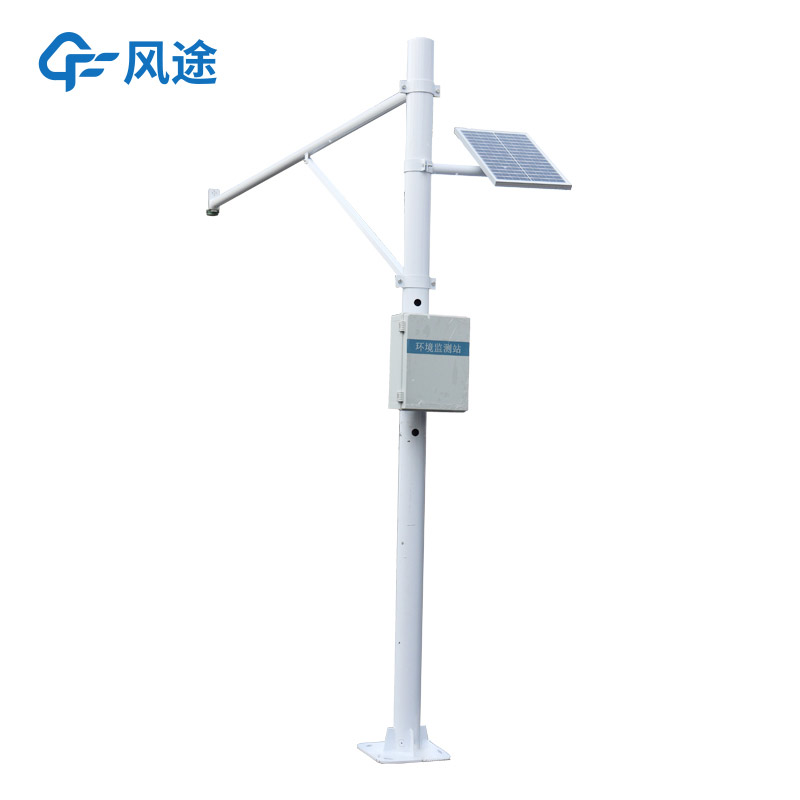Tianyi Sensor IOT Technology Co., Ltd
Sales Manager:Ms. Emily Wang
Cel,Whatsapp,Wechat:+86 15898932201
Email:info@fengtutec.com
Add:No. 155 Optoelectronic Industry Accelerator, Gaoxin District, Weifang, Shandong, China

Sales Manager:Ms. Emily Wang
Cel,Whatsapp,Wechat:+86 15898932201
Email:info@fengtutec.com
Add:No. 155 Optoelectronic Industry Accelerator, Gaoxin District, Weifang, Shandong, China
time:2025-07-23 08:50:12 source:Weather Station viewed:153 time
The water and rainwater detection equipment, namely the Water Level Monitoring System, can efficiently and accurately obtain data such as water level, flow rate, and rainfall.
The Water Level Monitoring System is a fully automatic hydrological online monitoring system based on microwave technology. In terms of water level measurement, it is realized by transmitting and receiving radar beams. The transmitter in the equipment emits radar beams to the water surface, and after the beams hit the water surface, they are reflected back and received by the receiver. Since the propagation speed of radar beams in the air is a known constant, the distance from the radar antenna to the water surface can be calculated according to the round-trip time of the beams. Moreover, because the installation height of the monitoring station is fixed and known, the accurate water level height can be obtained by subtracting the measured distance from the installation height. This non-contact measurement method avoids the problem that traditional contact measurement is interfered by factors such as water quality, sediment, and floating objects.
The measurement of flow rate is relatively more complex. The formula for calculating flow rate is: Flow Rate = Average Flow Velocity × Cross - sectional Area of Flow × Correction Coefficient. To obtain the average flow velocity, the surface velocity of the fluid is collected by a current meter, and then it is calculated through a model. The cross - sectional area of flow is calculated from the water level measured by the water level gauge and the pre - known cross - section information. The monitoring station can calculate and output the real - time cross - sectional flow and cumulative flow by using the built - in software algorithm and combining the measured flow velocity and water level data. Through the accurate monitoring of flow rate, we can reasonably dispatch water resources and assess flood risks.
Rainfall monitoring is also an important function of the Water Level Monitoring System. It uses a tipping bucket rain gauge. When it rains, the rainwater enters the tipping bucket through the rain receiver. When the amount of rainwater received by the tipping bucket reaches a certain level, it will automatically tip over under the action of gravity to pour out the rainwater. During the tipping process of the tipping bucket, it will trigger the reed switch to generate a switch signal. The monitoring station can calculate the cumulative rainfall and rainfall intensity by recording the number of signals generated by the reed switch and combining it with the measurement accuracy of the tipping bucket (i.e., the rainfall value represented by each tip). This measurement method has a simple structure and stable performance, and can measure rainfall relatively accurately, providing reliable rainfall data for meteorological analysis, flood control, and drought relief work.
At present, the Water Level Monitoring System is widely used in scenarios such as rivers, lakes, reservoir gates, underground water pipe networks, and irrigation canals, assisting in water treatment operations such as urban water supply and sewage monitoring.

When it comes to anemometers, the most classic Mechanical anemometer immediately comes to mind. It realizes the measurement of wind speed and direction through mechanical structures and physical principles, and its classic nature stems from a mature technical system and extensive application practic...
In the complex and unpredictable rescue environment, firefighters often face numerous challenges. Tasks such as underwater rescue and the inspection of waterlogged areas at fire scenes have become difficult aspects of rescue work due to the interference of water bodies and insufficient light. The em...
For a long time, air quality indicators have mostly been negative pollutants such as PM2.5 and sulfur dioxide. In contrast, negative oxygen ions, known as "air vitamins" beneficial to human health, serve as important positive indicators for measuring air freshness and ecological constructi...
The Automatic Soil Monitoring System is a common device in modern precision agriculture and ecological environment monitoring. It provides reliable data for farmland irrigation, drought warning, and scientific research by measuring key parameters such as soil moisture, temperature, and electrical co...